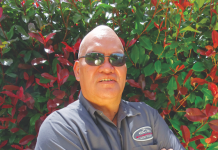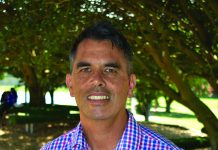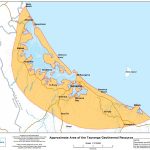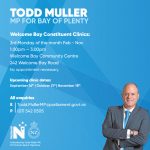Jenny McArthur, a former resident of Tauranga, works as a lecturer at University College London. Jenny’s research and teaching focus on infrastructure planning, investment and governance in cities. During a recent visit to the Bay, Jenny spoke with Bay Waka about the transport and housing challenges for Tauranga.
In the first feature for us, Jenny discusses the public debate on traffic congestion.

Each summer I return to Tauranga, where I spent much of my childhood. I am increasingly concerned about the ongoing expansion of road infrastructure to support the city’s growth. NZTA-led projects like the Welcome Bay Underpass and Bayfair to Baypark Link are promoted as essential investments, but there are good reasons to question their long-term value. Moreover, it is not just what is built that I find confusing: much of the public debate about transport overlooks the actual problems.
While I cannot provide all the answers in 700 words, I propose two points for more constructive debate about Tauranga’s transport. First, congestion isn’t the right problem to solve and attempts to reduce congestion are usually self-defeating. Instead, planning should target three objectives: accessibility, safety and environmental sustainability. This simple change in terminology makes a big difference. Second, improving urban mobility isn’t just about technical solutions and building new infrastructure. It requires social and cultural shifts in our expectations and willingness to change how we travel.
Newspaper headlines, project announcements and local politicians all focus on tackling congestion. Congestion is very visible, and of course, frustrating to experience – but it is the wrong problem to fix. Congestion is an unavoidable symptom of cities where most people travel by car and the idea that congestion can be solved by building larger roads is the biggest fallacy of transport planning in the past fifty years. Studies show that traffic growth expands as you increase road capacity, a phenomenon known as induced demand. Many traffic engineers still hold to the doctrine of ‘predict and provide’: engineers run forecasting models that estimate future traffic growth, the forecasts are used to justify road investment, and because roads capacity increases, the forecast comes true – it is a self-fulfilling prophecy. Los Angeles is the archetypal example of this approach, with freeways up to fourteen lanes wide that are still in gridlock. However, even Los Angeles have learned from their mistakes, with US$120 billion planned transit investment over the next forty years.
Accessibility, Safety and Environmental Sustainability
It is essential to start with a different definition of the problem. Instead of targeting congestion, transport planning should focus on accessibility, safety and environmental sustainability. These goals are tangible outcomes, and in contrast to congestion-reduction, they are actually achievable. However, they require changes in travel choices and behaviour as well as infrastructure investment. Accessibility, safety and environmental sustainability are best improved by prioritising investment in a multi-modal system of safe, separated cycle lanes and public transport services, which intentionally limits the allocation of space and priority to drivers (the city council’s new cycle lanes are a start, but they must be safe and properly separated from vehicle traffic). Re-allocating space from cars to other travel modes is a huge political challenge in cities where most people drive, and I’m sure many readers think this is a terrible idea. This brings me to the next point – culture and social norms. Changing the way we travel around the city is not just about technical solutions like bus priority corridors, cycle lanes and safety improvements for pedestrians, but also cultural attitudes and expectations. For example, priority lanes for public transport services make more efficient use of road space, but also take a normative stance that the transport system should be accessible for everyone, not just drivers. Marginalising the needs of bus riders, is in effect marginalising the elderly, youth and low-income populations who depend on public transport the most.
In recent years I have studied transport systems in a wide range of cities, including Lisbon, Abu Dhabi, Singapore, Kuwait, Sweden and Budapest. The right solution for any city is not just a technical problem; it involves normative choices based on local values and preferences. The continued expansion of large, unsightly and expensive roading projects is not necessary to meet Tauranga’s transport needs. Residents and local politicians have a choice, to continue on lobbying for California-style gridlock, or invest in alternatives that will genuinely improve accessibility, safety and environmental sustainability.
Dr. Jenny McArthur
Lecturer in Urban Infrastructure and Policy, University College London
Bachelor of Engineering (Civil) / Bachelor of Commerce (Economics), University of Auckland
PhD in Engineering, University College London









































































